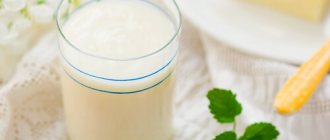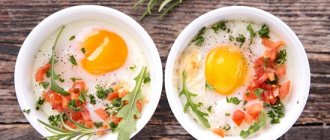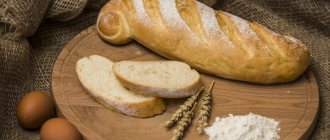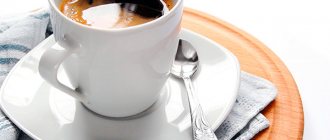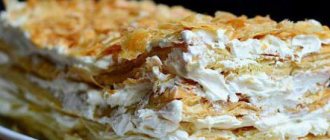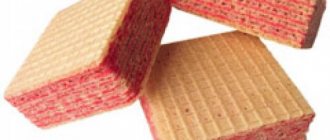Far Eastern shrimp (meat)
rich in vitamins and minerals such as: choline - 16.2%, vitamin B12 - 26.7%, vitamin E - 15.3%, vitamin PP - 25%, magnesium - 15%, phosphorus - 27.5%, iron - 12.2%, iodine - 73.3%, cobalt - 120%, copper - 85%, molybdenum - 14.3%, selenium - 53.8%, chromium - 110%, zinc - 17.5%
- Choline
is part of lecithin, plays a role in the synthesis and metabolism of phospholipids in the liver, is a source of free methyl groups, and acts as a lipotropic factor. - Vitamin B12
plays an important role in the metabolism and transformation of amino acids. Folate and vitamin B12 are interconnected vitamins that are involved in hematopoiesis. A lack of vitamin B12 leads to the development of partial or secondary folate deficiency, as well as anemia, leukopenia, and thrombocytopenia. - Vitamin E
has antioxidant properties, is necessary for the functioning of the gonads and heart muscle, and is a universal stabilizer of cell membranes. With vitamin E deficiency, hemolysis of erythrocytes and neurological disorders are observed. - Vitamin PP
is involved in redox reactions of energy metabolism. Insufficient vitamin intake is accompanied by disruption of the normal condition of the skin, gastrointestinal tract and nervous system. - Magnesium
is involved in energy metabolism, the synthesis of proteins, nucleic acids, has a stabilizing effect on membranes, and is necessary to maintain the homeostasis of calcium, potassium and sodium. A lack of magnesium leads to hypomagnesemia, an increased risk of developing hypertension and heart disease. - Phosphorus
takes part in many physiological processes, including energy metabolism, regulates acid-base balance, is part of phospholipids, nucleotides and nucleic acids, and is necessary for the mineralization of bones and teeth. Deficiency leads to anorexia, anemia, and rickets. - Iron
is part of proteins with various functions, including enzymes. Participates in the transport of electrons and oxygen, ensures the occurrence of redox reactions and activation of peroxidation. Insufficient consumption leads to hypochromic anemia, myoglobin deficiency atony of skeletal muscles, increased fatigue, myocardiopathy, and atrophic gastritis. - Iodine
is involved in the functioning of the thyroid gland, ensuring the formation of hormones (thyroxine and triiodothyronine). Necessary for the growth and differentiation of cells of all tissues of the human body, mitochondrial respiration, regulation of transmembrane transport of sodium and hormones. Insufficient intake leads to endemic goiter with hypothyroidism and slowing of metabolism, arterial hypotension, stunted growth and mental development in children. - Cobalt
is part of vitamin B12. Activates enzymes of fatty acid metabolism and folic acid metabolism. - Copper
is part of enzymes that have redox activity and are involved in the metabolism of iron, stimulates the absorption of proteins and carbohydrates. Participates in the processes of providing oxygen to the tissues of the human body. Deficiency is manifested by disturbances in the formation of the cardiovascular system and skeleton, and the development of connective tissue dysplasia. - Molybdenum
is a cofactor for many enzymes that ensure the metabolism of sulfur-containing amino acids, purines and pyrimidines. - Selenium
is an essential element of the antioxidant defense system of the human body, has an immunomodulatory effect, and is involved in the regulation of the action of thyroid hormones. Deficiency leads to Kashin-Beck disease (osteoarthritis with multiple deformities of the joints, spine and limbs), Keshan disease (endemic myocardiopathy), and hereditary thrombasthenia. - Chromium
is involved in the regulation of blood glucose levels, enhancing the effect of insulin. Deficiency leads to decreased glucose tolerance. - Zinc
is part of more than 300 enzymes and is involved in the processes of synthesis and breakdown of carbohydrates, proteins, fats, nucleic acids and in the regulation of the expression of a number of genes. Insufficient consumption leads to anemia, secondary immunodeficiency, liver cirrhosis, sexual dysfunction, and the presence of fetal malformations. Research in recent years has revealed the ability of high doses of zinc to disrupt the absorption of copper and thereby contribute to the development of anemia.
more hide
You can look at the complete guide to the healthiest foods in the app.
Shrimp
are certainly small in size, but from the point of view of nutritional value and health benefits they have a big advantage.
Shrimp are very popular all over the world. They account for 30% of consumed seafood. Therefore, they take first place in popularity, ahead of squid and crabs
.
How many calories are in shrimp
There are various types of shrimp available in the market, some of the most common ones are pink prawns, king prawns, tiger prawns and giant tiger prawns. Plus, it's easy to find different sizes and colors. Shrimp when raw is usually pink, greyish, yellowish or brown. However, when cooked, shrimp meat tends to become opaque and take on an orange tint.
Shrimp are produced, sold and consumed in a variety of ways, including fresh, frozen, breaded, dried, in salads, sushi and pasta.
Shrimp is a dietary source of protein. Moreover, shrimp is a nutritious alternative to high-protein diet meats (turkey, chicken).
Recipes and calorie content of shrimp dishes
Recipe for risotto with mushrooms and shrimp
- 3 tbsp. l. ;
- 120 g chopped;
- 120 g peeled and chopped shrimp;
- 1 clove, chopped;
- 1 finely chopped;
- 320 g long grain brown;
- 1.2 liters of chicken broth;
- 3 tbsp. l. fresh green onions;
- 120 g green;
- salt and pepper.
Heat 2 tbsp. l. olive oil in a large saucepan. Add mushrooms and shrimp, season with salt and pepper. Cook, stirring constantly, for 3-5 minutes until the shrimp are cooked through. Transfer to a plate and set aside.
Using the same pan, heat 1 more tbsp. l. olive oil, add garlic and onion and fry. Add rice and soak in oil for a few minutes. Add half a cup of broth. Cook, stirring until the broth absorbs everything. Add half a cup of broth each time the liquid is absorbed until all the broth is used up. Add peas, green onions, fried shrimp and mushrooms. Cook for a few minutes, stirring constantly.
Calorie content – 122.59 kcal / 100 g.
Spicy shrimp omelette
- 3 tsp. olive oil;
- 1 tbsp. l. garlic;
- 1/8 tsp. chilli;
- 1/2 cup peeled, chopped shrimp;
- 1/2 cup;
- 4 egg whites;
- 2 whole;
- 4 tbsp. l. water;
- a pinch of salt and pepper.
Add 2 tsp to a non-stick frying pan. olive oil, garlic and chili pepper. Add shrimp, bell pepper and fry until almost done. Beat eggs and egg whites with water and salt and pepper. Mix 1 tsp. olive oil with shrimp and bell pepper and pour into the egg mixture. Fry the eggs until done. Turn the omelette over.
Calorie content – 220 kcal / 100 g.
Recipe with photo of shrimp soup
- 1 l. water;
- 160 g squid;
- 500 g shrimp;
- 60 g long grain rice;
Boil shrimp in boiled salted water. Remove the cooked shrimp and peel them. Strain the broth to remove excess elements and pour it back into the pan. Add rice and cook covered for 10 minutes. Add carrots. Cut the squid into rings and add to the soup. Cook for 10 minutes, then add salt and add herbs.
Calorie content – 38.87 kcal / 100 g.
Sea cocktail recipe with photo
- 60 g boiled squid;
- 40 g king prawns;
- 80 g crab sticks;
- 70 g mussels;
- 70 g seaweed.
How to make this sea cocktail.
Clean the squid and cut into rings. Boil and peel the shrimp. Chop the crab sticks finely. Boil the mussels until they open. Mix all ingredients and sprinkle with lemon juice.
Calorie content – 95.53 kcal / 100 g.
Shrimp kebab
- 20 pcs. tiger shrimp;
- 50 ml;
- 110 ml;
- hot pepper;
- 50 ml;
- 50 ml tartar sauce;
- 4 cloves of garlic;
- 30 g brown sugar;
- basil;
- cilantro.
Mix all ingredients except shrimp. Heat on fire and let cool. Place the peeled shrimp in a bowl and pour in the marinade. Leave for 3-5 hours in a cool place. You need to fry the shrimp kebab for 5 minutes over the coals on the grill.
Calorie content – 95 kcal / 100 g.
Application
Shrimp are a very valuable and tasty product. The abdomen, which must first be cleared of the shell, is eaten. Usually shrimp are boiled, but another type of cooking can be used. Used both as a separate dish and in the preparation of sauces, salads, and soups. A popular dish with the addition of shrimp meat is sushi. Boiled shrimp are perfect as a snack for beer.
Market Analytics
- COVID-19 is changing the rules of the game in the cosmetics market
- Beauty of the future: cosmetic innovations 2020
- New ingredients are the driving force of the cosmetics industry
Convenient search for beauty salons on our website
Beauty salons in Moscow Beauty salons in St. Petersburg Beauty salons in Ekaterinburg Beauty salons in Novosibirsk
Latest blog posts on our website
- Naturecream / Geranium (Pelargonium) oil for skin health and beauty
- Prostye-sovety / Save on a beauty salon: procedures that can be done at home
- Naturecream / Growth Factor - brings back youth?
- Oksana-Lezina / 3 effective abdominal exercises from a fitness instructor for beginners
- Prostye-sovety / Making perfect curls at home
- Prostye-sovety / Which hair removal method to choose
- Naturecream / Wrinkles Puppets
- Naturecream / PEPHA-TIGHT - instant skin lifting
- Naturecream / Blue light - a danger to the skin
- Naturecream / Cocoa Butter – A treat for the skin
Latest forum topics on our website
- Mrs._Smith / Badly sunburned! What to do?((
- Ice / Is it necessary to combine fitness classes with a diet?
- Antonova / What can be used for hair loss?
- Radio operatorKat / Who was on a protein diet?
- Suzanna / Mesotherapy on the face
Other articles in this section
| Taimen Taimen fish belongs to the salmon family. This fish is the largest of this entire fish family. Taimen can be found in the waters of the Far East and the Urals, as well as Yakutia. Previously, this fish lived even in the Volga, but then they began to build dams, and the fish disappeared from this river. Taimen does not live in salt water - it is not suitable for the reproduction of this fish. That is why this fish cannot be found in the sea. |
| Fried catfish Among the many types of sea fish, catfish is in great demand. Most often it is found in Pacific and Atlantic waters, as well as in the waters of such seas as the North, Norwegian, Barents, White and Baltic seas. This fish is divided into several types: striped, blue, Far Eastern, spotted, eel. It is usually found in cold sea waters, which is the catfish's natural habitat. |
| Rapana Rapana belongs to the genus of predatory mollusks, type – gastropods. The shell has spiral ribs, is wide, and can reach 19 centimeters in size. Previously, the habitat was narrow - only three seas in the Far East. In the middle of the 20th century, rapana was brought by ships into the Black Sea, which marked the beginning of a significant spread of the mollusk along the Adriatic coast. |
| Herring in sour cream Herring belongs to the herring family, and is widely distributed in various waters. Its nutritional value and taste differ in the method and time of fishing, the type of herring and its further processing. |
| Bluefish Bluefish is a predatory oceanic fish, belongs to the order of perciformes, the family of bluefish. Its habitat is the tropical waters of the Atlantic, Pacific and Indian oceans. Also found in the Black and Mediterranean Seas. |
| Tuna in its own juice Belonging to the mackerel family, tuna prefers to live in the warm waters of the Atlantic and Pacific oceans. The fish leads a schooling lifestyle and can travel quite long distances as part of a school. |
| Boiled sea bass Sea bass is a bony fish belonging to the scorpion fish family, prefers to live in the cool waters of the Pacific and Atlantic oceans at a depth of more than 100 meters. Under natural conditions, fish live quite a long time - up to 15 years. The catches include small fish about 20 cm and large ones, reaching a weight of 5-10 and even 15 kg. The main catch fishery takes place in Northern Norway. |
| Stuffed pike Pike is a freshwater fish. One of the most popular in cooking. Pike dishes are tasty, nutritious, healthy and dietary. A festive table setting is not complete without culinary masterpieces using this fish. |
| Canned crabs Crab meat is a desired product for culinary connoisseurs all over the world. On an industrial scale, crab fishing is carried out in the Pacific and Atlantic oceans. This is an unsafe activity, but the risk is justified by the fact that crab meat has a delicate taste and brings great benefits to human health. |
| Fresh salmon Fresh salmon is an indispensable product for the human body. The body length of salmon is from 50 to 150 cm, covered with small bluish-gray scales. The weight of salmon is usually from 5 to 30 kg, but sometimes large specimens up to 45 kg are found. Fresh salmon meat is colored a pleasant pink color and has an elastic consistency. |
Nutritional value and chemical composition of shrimp
Shrimp is an excellent source of selenium. Selenium is an essential trace element in the human body. Shrimp contain astaxanthin, a carotenoid
, which gives them a pink color, and also acts as a powerful antioxidant and protects the skin from premature aging.
Crustaceans, having a huge number of species, ranging in size from two to thirty centimeters. A delicacy from the depths of the sea, there are few indifferent to its wonderful taste. A variety of dishes are prepared with them and are included in diets.
Calorie content of unpeeled shrimp
The calorie content of unpeeled shrimp is 90 kcal per 100 grams of product.
Useful properties of unpeeled shrimp
The product is dietary due to its low fat content: 85.5 kcal per 100 g. The calorie content of one medium-sized unrefined crustacean is 8 kcal. Large king prawns have more calories: 94.6 kcal\100 g or 12 kcal\pcs.
Compound
- Lots of proteins rich in amino acids.
- Vitamins A, D, groups B, K, E.
- Inorganic elements: calcium, potassium, iodine, phosphorus, sulfur, zinc, selenium.
- Chitin is an animal analogue of fiber.
The amount of protein in 100 g of product is 19.16 g, fat – 1.74 g, carbohydrates – 0.6 g.
Benefits
- Vitamin D – in children is responsible for the normal development of bone tissue and is involved in the synthesis of hormones.
- Group B – vitamins are involved in metabolism, energy exchange, and normalize metabolism.
- Eating seafood will have a positive effect on the condition of joints, nails, skin, balance blood pressure, and increase potency.
- Get strong immunity and prolong your youth.
- Chitin does not dissolve in the stomach, passes through the intestines, cleansing the walls, stimulating their contraction. At the same time, chitin does not contain acids harmful to “ulcers” (unlike plant fiber).
- Chitin protects the body from radiation, ultraviolet radiation, and inhibits the development of cancer.
Possible harm
Cholesterol, although in small quantities, but contained in shrimp, is contraindicated in patients with atherosclerosis.
This seafood has a short shelf life and does not tolerate violations of processing technology and storage conditions. May cause serious poisoning.
How to choose unpeeled shrimp
Large representatives (tiger, royal) are caught in the southern seas. They look presentable, but taste bland. Chitin is hard, it is unpleasant to eat, you have to remove it and throw it away.
Northern shrimp are small but flavorful. The chitinous shell is soft, they are added to dishes unpeeled.
Buy packaged products, where the packaging contains complete information about the supplier and shelf life. Pieces of ice and snow are not allowed.
A bent tail is a sign that the crustacean was boiled alive as soon as it was caught. The quality of specimens with a straight body is worse; they lay for a long time waiting for cooking.
Caliber is an indicator of the number of crustaceans in one kilogram. The lower the number, the larger the shrimp.
Security check:
- shiny, not dry shell, without faded spots;
- white stripes – frozen product;
- signs of spoilage - black head, black and yellow spots, bumps, yellowish meat;
- brown head is a sign of pregnancy, there are caviar.
What to cook with unpeeled shrimp
Prepared as an independent dish, an addition to a side dish, or a decoration for a dish. Remember: rubbery shrimp are overcooked and should have a tender texture.
- The most popular way is to cook. Salt, spices, and herbs are added to boiling water.
- Fry in a pan using butter and lemon juice and garlic.
- Marinate in various sauces, even beer.
Shrimp is a very healthy, tasty and extremely popular product recently. Due to the low calorie content of shrimp and the large amount of various microelements, minerals and vitamins in them, shrimp dishes are used in the menu of many diets and in a balanced diet.
The low calorie content of shrimp is due to:
- Low fat content – maximum 5%;
- Carbohydrate content less than 1%;
- Protein – up to 20%.
The indicator that determines the increase in blood sugar (glycemic index) when eating shrimp is extremely low, only about 5 units.
A significant portion of the fats contained in shrimp are essential polyunsaturated fatty acids Omega-3 and Omega-6, which are necessary for the normal functioning of the cardiovascular system, are involved in strengthening cell membranes, activate brain activity, and have anti-inflammatory and antitumor effects on organs and tissues.
The protein contained in shrimp is rich in taurine, which, by keeping low-density lipoproteins from being absorbed into the bloodstream, helps reduce cholesterol levels, prevents the deposition of abdominal fat, which reduces insulin resistance, and is necessary for cellular nutrition, maintaining elasticity and vascular tone. In addition, taurine regulates the balance of potassium and sodium in the heart muscle, supporting heart function. Taurine from shrimp protein is added to most energy drinks. That is why not only the low calorie content of shrimp, but also the large amount of taurine in them are important when used in diets.
About 75-80% of shrimp contains water, trace elements, vitamins and minerals necessary for normal life, so the calorie content of boiled shrimp is low, and the nutritional value is significant. Retinol (vitamin A), vitamin D, vitamin B1, vitamin B2 (riboflavin), vitamin B9 (folic acid), vitamin B12, vitamin C (ascorbic acid), vitamin E (tocopherol) are necessary for the functioning of the nervous and digestive systems, heart and blood vessels, thyroid gland, health of skin, bones, hair, vision, maintaining immunity, in the process of assimilation of phosphorus and calcium.
Shrimp contain iodine, calcium, phosphorus, copper, iron, potassium, cobalt in quantities that satisfy the body's daily needs. Shrimp contain hundreds of times more iron than beef. Shrimp meat also contains sulfur, selenium, molybdenum, magnesium, zinc, manganese, fluorine, and chromium in varying quantities.
Benefits of shrimp
The following beneficial properties of shrimp have been proven:
- due to its low calorie content, the product is indicated for weight loss and excess weight;
- shrimp are full of healthy proteins, which are necessary to strengthen muscles and maintain healthy skin;
- Shrimp B vitamins are good for nails, skeletal system, hair, heart, blood vessels;
- Vitamin C contained in shrimp enhances immune functions;
- A 100-gram serving of shrimp supplies the body with the daily requirement of iodine;
- Selenium and zinc from seafood stimulate male potency.
How many calories are in shrimp
How many calories are in shrimp depends on the type (small-sized ones, northern sea and Far Eastern shrimp are more nutritious) and the method of cooking. The calorie content of boiled shrimp is practically no different from the calorie content of raw shrimp. Calorie content per 100 g of shrimp:
- Fresh, not thermally processed – 73-107 kcal;
- Boiled shrimp – 80-115 kcal;
- Baked with sour cream sauce – 170-180 kcal;
- Fried shrimp – 120-150 kcal;
- Shrimp fried in batter – 240-250 kcal.
It is important to know that medium-sized, higher-calorie shrimp contain more useful minerals, and they differ favorably in taste from large species. In terms of calories, shrimp are comparable to low-fat fish (pike, crucian carp, flounder, hake, tilapia, etc.), potatoes, green peas, and bananas. But at the same time, the content of useful elements in them is several times higher.
This unique seafood product has a number of contraindications for consumption that you need to be aware of. You should not eat shrimp if you have thyroid disease, liver problems, allergic rhinitis, bronchial asthma, or conjunctivitis. In any case, the decision to include low-calorie shrimp in the diet menu should be made after consultation with a nutritionist.
Of all the seafood available on store shelves, shrimp is perhaps the most popular. If previously they were eaten mainly fried and baked, now they are more often boiled, since the calorie content of boiled shrimp is lower than with other cooking methods. Tender meat is added to salads and appetizers, soups and risotto are prepared with it. Moreover, you can cook shrimp not only in water, but also in milk, green tea or even beer. It is no coincidence that this seafood has earned universal love: its meat is one of the main sources of natural protein, and in addition contains a significant amount of zinc and selenium, which have a beneficial effect on the metabolic rate. This makes shrimp one of the best dietary foods, and doctors even recommend it in the fight against obesity. But lovers of exact numbers probably want to know how many calories are in shrimp in order to confidently include them in their daily diet. There is, of course, no single clear figure here: the calorie content of shrimp will depend on their type, as well as on the cooking method.
In addition to the positive effect on the figure, this seafood can improve the health of the entire body as a whole: strengthen hair and nails, tidy up the condition of the skin, normalize the endocrine and cardiovascular system, increase resistance to infections and allergies. This is all due to the impressive list of vitamins and microelements found in shrimp, among which, in addition to the above-mentioned zinc and selenium, there is iodine, the daily norm of which can be obtained by eating only 100 g of the product, calcium, copper and Omega-3 fatty acid, vital for proper work of the heart. It was also found that shrimp contain a strong antioxidant, the accumulation of which in the body helps prevent the risk of cancer by forming new cells and tissues.
What are the calories in shrimp?
Shrimp is a desirable delicacy for almost every table.
Their popularity is justified by their extremely pleasant taste and benefits for the body.
Shrimp are a real storehouse of vitamins, proteins and minerals: vitamin A, provitamin A, vitamin B1, B2, B9, B 12, D, E, C, PP, as well as microelements: iron, manganese, zinc, chromium, cobalt, molybdenum, nickel and magnesium. They contain large amounts of elements such as fluorine, copper, iodine, sodium, calcium, sulfur, phosphorus.
Shrimp are rich in folic acid, which is so necessary for pregnant women and children in the active stage of growth, and the carotenoid helps the formation of new cells and tissues, reducing the risk of cancer. Taurine, which is extracted from them, has long been used in the manufacture of energy drinks.
How many calories are in shrimp
The average calorie value for shrimp is 97 kcal per 100 g. What is noteworthy: if you look at the total energy value of seafood, you can see that there are no fats or carbohydrates in it, and only proteins have a high value. The percentage ratio looks like 84%:15%:1%, but don’t let the second number scare you: here fats mean fatty acids. Therefore, if you need a nutritious source of protein with low calorie content, shrimp should be your first choice. Moreover, one piece contains only 25 grams, and 5-7 pieces are enough to completely saturate an adult.
For tiger shrimps, which have a dark color and transverse stripes, the value of carbohydrates in energy value becomes zero, and proteins increase to 86% with 6% fat. As for the calorie content of this type of shrimp, compared to the previous ones, it drops to 89 kcal per 100 g. And the weight of the seafood increases to 40 grams per piece. What distinguishes this species, in addition to the previous points, is its even higher protein content, which makes tiger shrimp an ideal choice for fitness nutrition: all the calories in shrimp go only to maintaining vital functions, without being stored in fats. It is best to combine tiger with a sauce of lemon juice and garlic with the addition of olive oil, and bake the seafood itself on the grill.
The nice thing is that even with such a low calorie content of shrimp, there are even “lighter” ones, even lighter than tiger ones. These include the so-called “royal” ones, which have an average weight compared to the previous two types - 35 grams per piece, and the lowest calorie value. In terms of energy value, king shrimp are not much different from other types: they are the same 84% for proteins, but 12% for fats and 4% for carbohydrates. There is also no noticeable difference in taste. But their “weight” will be 87 kcal per 100 g.
Calorie content of shrimp, beneficial properties
High concentration of protein and minimal amount of fat. This composition is not often found in tasty products. However, shrimp are just such a case. You can prepare a quick and healthy dish from them in a matter of minutes. In addition, you can use them even in the evening - 3 hours before bedtime. This will only benefit your figure.
Beneficial features
In addition to the ideal ratio of protein to protein, the list of benefits of shrimp includes a long list of vitamins: A, C, D, E, K, PP and almost everything from group B. This product can also boast of containing more than 10 microelements: iodine and phosphorus, potassium and calcium, magnesium and fluorine, iron, zinc and sulfur. Thanks to this, regular consumption of shrimp will bring many benefits to your body.
- Shrimp improves immunity.
- These seafood strengthen blood vessels and improve the functioning of the entire cardiovascular system.
- Shrimp balances hormonal levels and normalizes the functioning of the thyroid gland.
- They help reduce weight , so they are recommended for people suffering from obesity. Those who want to strengthen or build muscle . To do this, shrimp with a salad of fresh vegetables should be eaten 20–30 minutes before sports training and after the same period.
- Shrimp strengthens bones.
- Improves the condition of skin, nails and hair . Seafood is considered to be a product of “youth and beauty”.
- They are believed to regulate the functioning of the sebaceous and sweat glands.
The beneficial properties of standard, king or tiger shrimp are identical. The difference between them is mainly just the size. The only thing is that the meat of small shrimp is the most tender, because they have a little more fat. Hence the higher calorie content. However, as can be seen from the table, the spread in the energy value of these products is small.
The table below provides information about the calorie content of raw shrimp.
Consumption and calorie content of shrimp
The simplest dish in the world is boiled shrimp .
To do this, just boil water, add salt, dill and add frozen seafood. The smallest boiled frozen ones are cooked for 3-4 minutes after boiling. The royal ones should bubble for about 6 minutes. But feel free to leave the tiger ones for 10 minutes. And don't be put off by such a short cooking time. Overexpose and you will get fragrant rubber! By the way, keep in mind that the weight of boiled shrimp compared to frozen shrimp will decrease by 1/3. Additionally, peeled shrimp weigh only 25% of the total weight of unpeeled frozen seafood .
Thus, if you took 500 gr. shrimp in ice, then the calorie content of the resulting finished product will be 119 kcal.
Do you want to cook a more refined and healthy dish? Combine boiled shrimp with fresh cucumbers, cherry tomatoes, avocado and boiled quail eggs. Place on a bed of green salad and dress with olive oil, lemon juice and basil.
The best shrimp recipes
Of course, the cooking method also influences how many calories end up in shrimp. The simplest, considered a classic, is cooking in a saucepan. Moreover, the calorie content of boiled shrimp compared to raw shrimp will increase by no more than 15 kcal. But frying in oil will almost double the original figure. But before we talk about how to maintain the benefits and enhance the fat-burning effect of shrimp dishes, it would be useful to mention the selection process. The store usually sells frozen fresh or already boiled seafood, which is always indicated by the manufacturer. If you have the opportunity to purchase them not in a closed package, where you can’t examine the product in any way, but to personally select the best, you need to pay attention to the color of the meat: it should not have a yellowish tint - this is a sign of old age. And for tiger shrimps, it is also important to check for the absence of black heads and bumps.
So, now you can go through the basic cooking methods. For boiled shrimp, the calorie content, as already mentioned, will remain almost unchanged, reaching 102-112 kcal per 100 g, which allows you to combine them with whatever your heart desires. For example, make a very healthy salad that accelerates metabolism and burns fat by combining boiled tiger shrimp, grapefruit and lime pulp, finely chopped cucumber, a clove of garlic passed through a garlic press, seasoned with soy sauce with the addition of cane sugar. All components are one way or another aimed at losing weight, as well as normalizing metabolism, and the calorie content of the dish remains quite low, especially since all the calories - shrimp, citrus fruits and cucumber - are negative. This allows it to be used, for example, as dinner.
Every person who considers himself a follower of a healthy diet should have a slow cooker. With its help, you can cook almost anything, while maintaining maximum benefits and minimal calorie content. Shrimp combined with rice and carrots with a cream sauce and a spoonful of olive oil turns into a hearty and light lunch. If desired, you can supplement the dish with herbs or dry white wine.
And another recipe for a low-calorie lunch, which is incredibly simple to make, but has a great effect on metabolism. Boiled shrimp are combined with broccoli or cauliflower, filled with a mixture of beaten eggs and milk and sent to the oven. To further reduce calorie content, you can eliminate the yolks by mixing only the whites with milk, and take milk with the lowest percentage of fat content.
For those who like fried shrimp, but the desire to lose weight does not allow them to be consumed constantly, you can cook them with chili sauce, lime juice, sesame oil and soy sauce. They are fried, dipped in a mixture of all the ingredients, in a Teflon frying pan, barely greased with vegetable oil. And the calorie content of shrimp in this case will be only 90 kcal, if “royal” ones were chosen for the dish. Can be served with boiled rice noodles. But in general, when it comes to preparing shrimp, the methods of preparing the dish are limited only by the cook’s imagination.
What to consider when choosing and purchasing shrimp
The purchase of seafood is carried out in compliance with certain rules:
- pay attention to the country of origin; shrimp from South Asia are of low quality, while the best are from Latin America;
- study the expiration dates of the goods, pay attention to the storage conditions;
- if you buy packaged shrimp, inspect them for the presence of large quantities of ice;
- there should be no spots on the crustaceans; if there are yellow or dark spots on the shell, then it is better to refuse the purchase;
- when the legs of the shrimp become dark, it is possible that the product may be treated with chemical reagents; there will be little benefit from such food;
- lumpy, uneven shells of crustaceans directly indicate a violation of storage rules.
Read: Is it possible to eat celery during pregnancy, general information about its beneficial qualities
It is better to purchase unpeeled shrimp, since after heat treatment their meat will be juicy and soft. Those that have been purified cannot boast of such characteristics.
Recommended video:
Specimens that are too large in size should alert the buyer. There is a risk that such shrimp were grown under artificial conditions, using antibiotics and growth stimulants.

